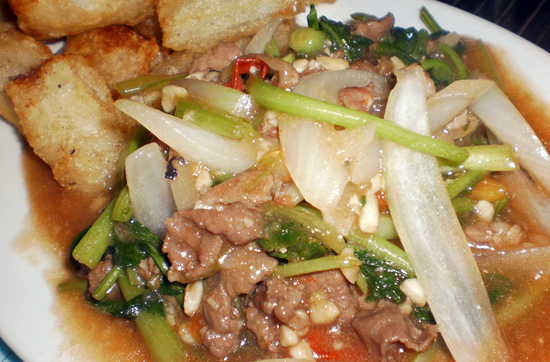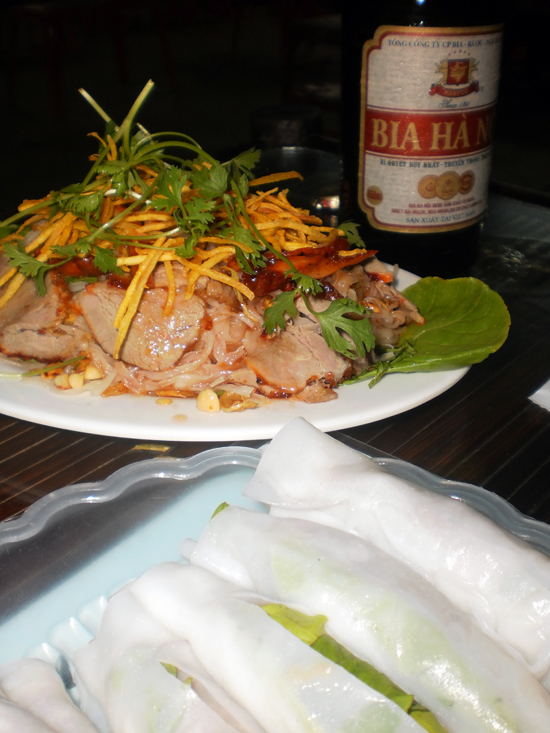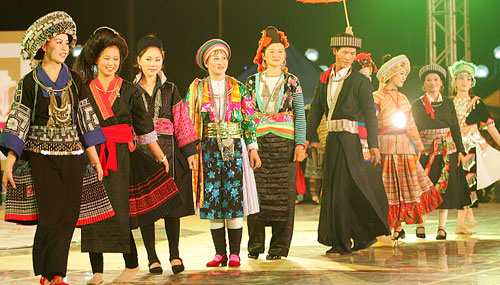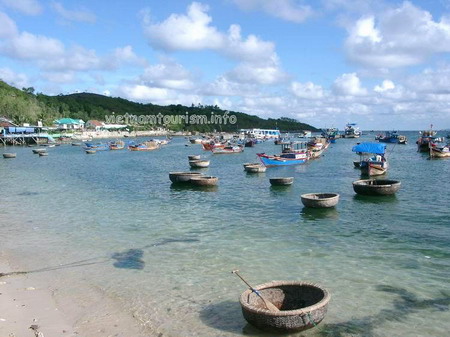I wrote some time ago about the pho-based dishes that are a specialty of the Truc Bach area of Hanoi; since then, a new place has opened up that makes pho cuon even more appealing. Based on Nguyen Khac Hieu street, on what is often referred to as Truc Bach island or Truc Bach village, Moc Quan is within a minute’s walk of numerous other pho cuon joints, about 100 metres from Truc Bach lake and just a short walk from Chau Long Market, and serves up delicious versions of pho — while offering some luxurious seating.
The menu is much the same as the nearby restaurants: pho cuon, pho chua, pho chien phong, khoai tay (chips/fries) and so on, plus a few additional items such as frogs’ legs, hotpot and squid.
The pho cuon has been consistently good here and is the best
we’ve had in the area: the beef is tender, there’s no gristle and it
comes with a good mix of herbs — we’ve noticed that some of the other
places have started only putting lettuce in. Also, pho chua has always been one of our favourites but elsewhere it’s just been another combination of pho and beef. At Moc Quan it’s pork-based, with some unidentifiable substances which we think may be slices of an internal organ but we like nonetheless.
As well as the quality food, the reason we like Moc Quan is the
set-up. Pho Cuon Bao Minh, by the lake, is a lovely spot, and Pho Cuon
Hung Ben is always lively, but Moc Quan offers something else: big tables and chairs.
And not only are they big, but they’re bamboo, not plastic. It’s pure
luxury. Seriously, small plastic stools have their place, but it makes
for a far more comfortable and leisurely dining experience when your
knees aren’t by your ears. But for those who prefer the more local
set-up, there are small stools and tables too.
The restaurant is mostly outside and very spacious. The bamboo chairs
are located under a covered area, but the roof’s high so you still feel
like you’re outside, while you’re protected from Hanoi’s regular
downpours. There’s also an inside area, but it looks a bit
claustrophobic to us so we’ve not ventured in.
Despite the size and comfort of Moc Quan, the prices are the same as elsewhere, with pho dishes 40,000 to 50,000 VND. Frogs legs are 150,000 to 200,000 VND a portion and hotpot is 250,000 VND up.
If you’re in Hanoi for a while and want a change from the street food available in Old Quarter, Moc Quan is definitely worth a visit. Combine it with a wander around Truc Bach Lake or a visit to the Bookworm or Chau Long Market.
Moc Quan53 Nguyen Khac Hieu, Truc Bach, Hanoi
T: (046) 2073 7476/(0904) 989 804
Sources: Travelfish








